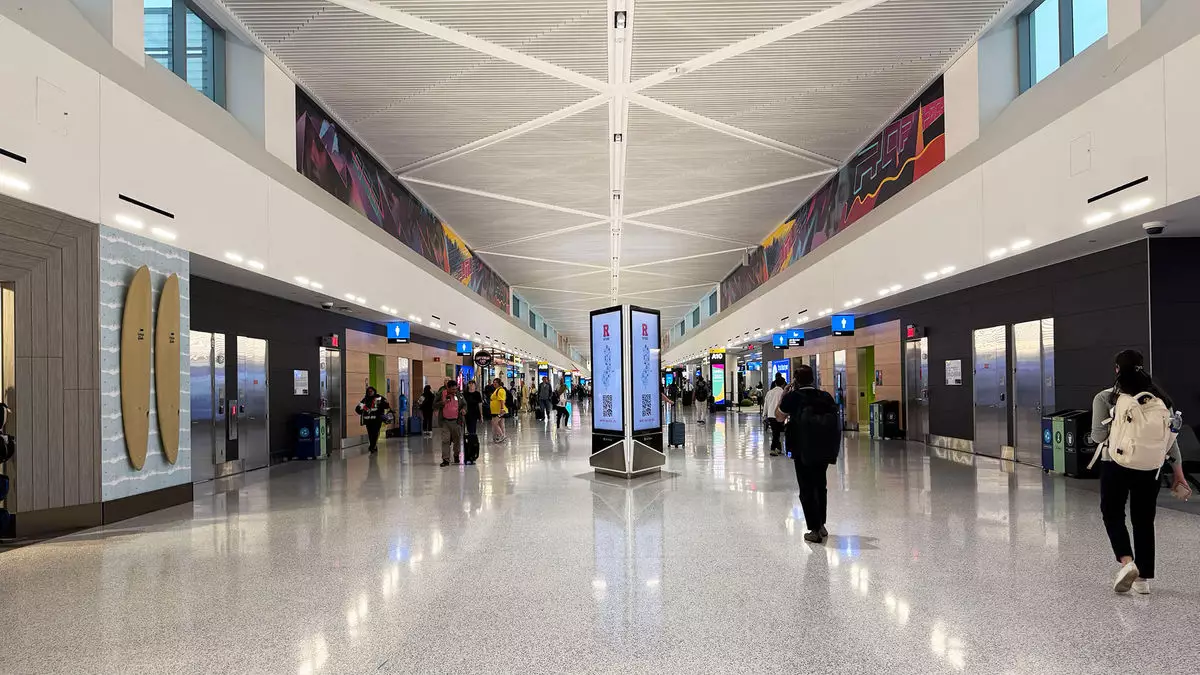The reopening of Newark Liberty International Airport’s runway 4L-22R marks a significant triumph in aviation management, achieved nearly two weeks ahead of the projected schedule. The Port Authority of New York and New Jersey, which oversees the airport, deserves commendation for navigating the complexities of this major infrastructure project. The closure of the runway since April 15 had diminished Newark’s operational capacity, complicating flight logistics and leading to extensive delays. This gamble to expedite repairs strikes a particularly hopeful chord in a sector often beleaguered by inefficiencies and problems.
The Impact of Reduced Capacity
During the runway’s closure, Newark was left with merely two operational runways, which severely compromised its capacity to handle the usual air traffic. This limitation was exacerbated by an ongoing communication failure at the air traffic control center near Philadelphia, resulting in a cascading series of cancellations and delays. As travelers experienced frustration during this turbulent time, United Airlines took a proactive approach, voluntarily scaling back service by cutting 35 flights daily. The Federal Aviation Administration (FAA) responded to the situation by imposing a cap of 56 arrivals and departures per hour, illustrating the extent of the operational turmoil.
A Collective Effort to Accelerate Repairs
The Port Authority’s response to the crisis exemplified a commendable commitment to addressing Newark’s operational challenges. To expedite the reopening of the runway, the agency mobilized additional crews and facilitated round-the-clock work shifts. This effort culminated in an early completion of renovation, disproving skepticism surrounding large-scale airport projects. Port Authority executive director Rick Cotton acknowledged that unforeseen challenges warranted a re-examination of the timeline, leading to a strategic decision to accelerate repairs. Such actions reflect a vital acknowledgment of the interdependencies within the aviation ecosystem—where one facility’s downtime can reverberate throughout a network.
The Financial and Logistical Facets of the Renovation
The $128 million investment in runway improvements heralds a multifaceted approach to modernizing Newark’s infrastructure. The enhancements included comprehensive milling and resurfacing, state-of-the-art airfield signage, and upgraded drainage systems—all essential components for ensuring safety and efficiency. Such modernizations not only bolster operational reliability but also contribute to the overall passenger experience. Enhanced infrastructure can yield dividends, as evidenced by United Airlines CEO Scott Kirby’s confidence in Newark’s competitive edge among New York airports for the summer travel season.
The Path Toward Reliability and Affordability
In light of these developments, there is a palpable sense of optimism regarding Newark’s future. Kirby indicated that Newark is poised to offer the highest on-time performance among New York area airports this summer—a substantial claim backed by his airline’s operational data. Furthermore, a potential increase in available seats could translate into lower fares, making travel more accessible at a time when many are eager to explore following the pandemic’s restrictions. As Kirby noted, this summer may present travelers with uniquely affordable options, underscoring the beneficial interplay of reduced demand and improved operational metrics.
Long-Term Implications and Recovery
While immediate challenges have been effectively navigated, the long-term implications of these operational adjustments remain to be seen. The FAA’s management of takeoff and landing protocols at Newark may establish a new precedent for traffic regulation, granting a measure of stability to flight schedules in the long run. However, the anticipated return of flight capacity—from 280 to a projected 380 daily flights—remains contingent on sustained cooperation among stakeholders. As both airlines and airport authorities embrace adaptive strategies, Newark may very well emerge as a beacon of reliability in the bustling New York airspace.
The rapid recovery from systemic setbacks exemplifies an evolving aviation framework that prioritizes collaboration, communication, and innovation. As we witness these transitions unfold, the overarching takeaway is that proactive measures in infrastructure management can yield significant benefits for both operators and travelers alike. The Newark experience, while emblematic of larger trends, reveals the potential for reimagining the travel experience in ways that prioritize efficiency, affordability, and reliability, making this summer one to watch at Newark Liberty International Airport.


Leave a Reply